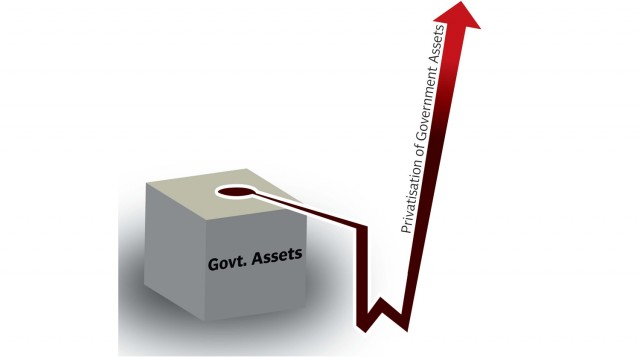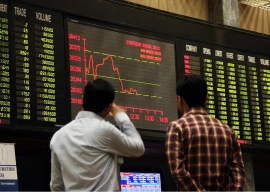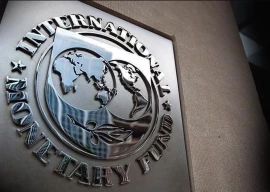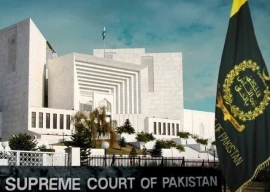
Over the past week, the federal finance minister, Abdul Hafeez Shaikh, has already pointed out the fact that loss-making government-owned enterprises cost the national exchequer over Rs250 billion every year. While he was not explicit in his recommendation to privatise these state assets, the government has been hinting for quite some time that it plans on getting rid of these companies as soon as it possibly can.
The logic of selling off loss-making enterprises is self-evident. The government is gaining nothing in profits and is losing substantial amounts of money each year just to keep these companies adequately capitalised. Yet it can also be mathematically proven that the government also stands to benefit from selling off profit-making enterprises as well.
Dividend yields versus interest costs
The case for privatising state-owned companies rests on comparing two key variables: dividend yields versus the cost of interest. Dividend yields refer to the amount that the government receives as a percentage of the total value of its shareholding in the company. Interest cost, in this particular case, refers to the interest payments that the government must pay on the rupee-denominated national debt.
Why are these two variables being compared to each other? Because the dividend yield represents the government’s returns on its investment in the companies that it owns. If the returns on its investments are lower than the cost of financing the national debt, then it makes sense for the government to sell off its shares in the companies and pay off the national debt.
For the purposes of this comparison, only seven publically-listed companies that have a substantial stake of government ownership are used. The seven companies are: Oil & Gas Development Corporation, Pakistan Petroleum, Kot Addu Power Company, National Bank of Pakistan, Pakistan State Oil, Sui Northern Gas Pipelines and the Sui Southern Gas Company.
All of the above companies are highly profitable and, with the exception of one, all paid out dividends during the last financial year. Based on the latest available dividend data from their respective financial statements for the year 2009, the average dividend yield on all of the above companies, weighted by market capitalisation, comes to 6.3%. This is nowhere near the interest rate that the government has to pay on the rupee-denominated debt that it owes to local banks and investors. According to the State Bank of Pakistan, the average interest rate during the latest Treasury bill auction was 12.4% for a 12-month treasury bill.
If the government were to sell off the entirety of its shares in the above seven companies at Friday’s closing stock prices, it can expect to get around Rs765 billion ($9 billion). By selling off the shares, the government would lose about Rs48 billion in dividend income. But if it used the entire proceeds of the sales to pay down the local debt, it would also save about Rs95.6 billion in interest payments every year. The net advantage comes out to Rs46.9 billion.
The domino effect of a positive liquidity shock
But the budgetary advantage is not the only benefit of such a sale. By paying off a large segment of the national debt, the government would be flooding the financial system of the country with cash, which will increase the amount of money available for the private sector to borrow and also, in all likelihood, drive down the cost of borrowing.
During the current fiscal year ending June 30, 2010, the government has accounted for fully 80 per cent of all new borrowing, with the private sector restricted to just Rs76 billion out of the Rs392 billion that has been disbursed thus far. If the government were to have a reduced borrowing footprint, in addition to paying back a sizeable chunk of its existing loans, the private sector would have access to significant amounts of capital, allowing them to consider expanding their production capacities, which in turn would raise the GDP growth rate and bring down unemployment.
In essence, paying down the local debt will serve to act as a $9 billion stimulus package for the economy. Unlike the stimulus packages in the United States and Europe, however, such stimulus would drive down the national debt rather than increase it.
For those who would argue that the government would also lose out on the growth of these profitable companies, one would simply say this: the government forces these companies to pay most of their income in dividends rather than investing them in further growth. If the government gave up its ownership, these companies would grow significantly faster, thereby increasing the amount that the government collects from them in tax revenues.
Simply put, there is no reason for the government to continue owning commercial enterprises, regardless of their level of profitability. That much is a mathematically established fact.
Published in The Express Tribune, June 28th, 2010.














1725352489-0/Untitled-design-(35)1725352489-0-270x192.webp)








COMMENTS (13)
Comments are moderated and generally will be posted if they are on-topic and not abusive.
For more information, please see our Comments FAQ